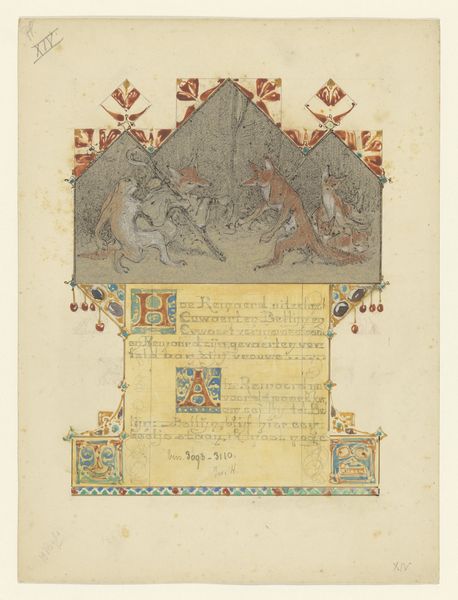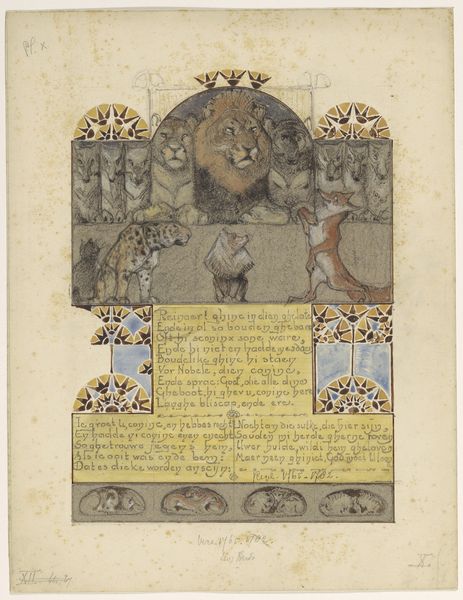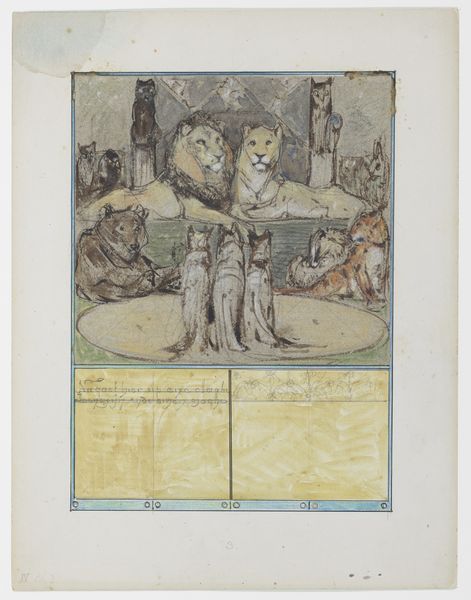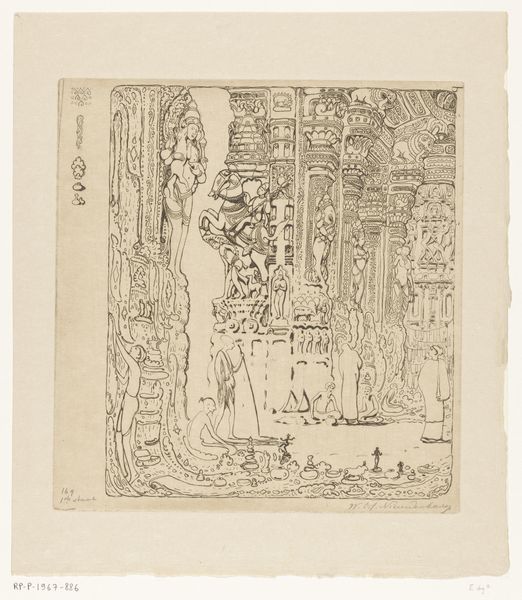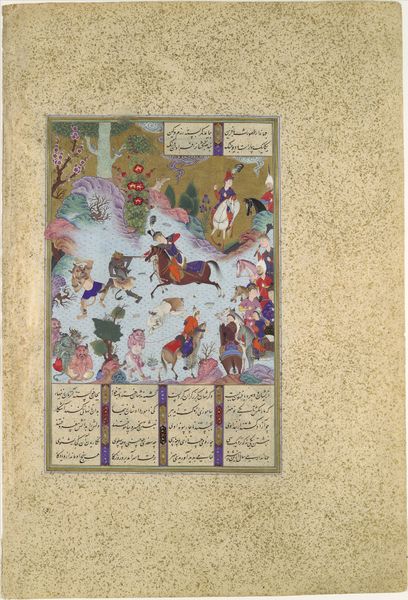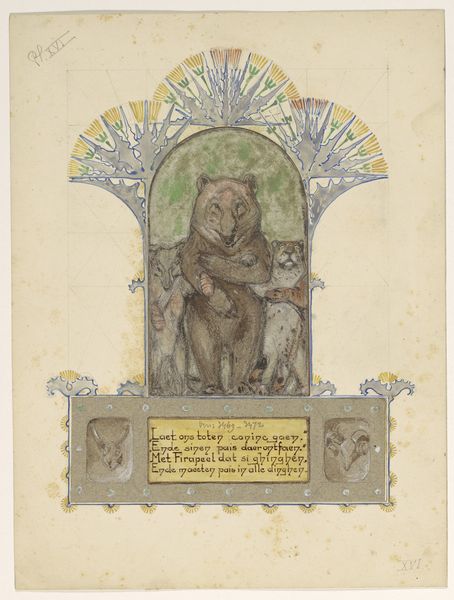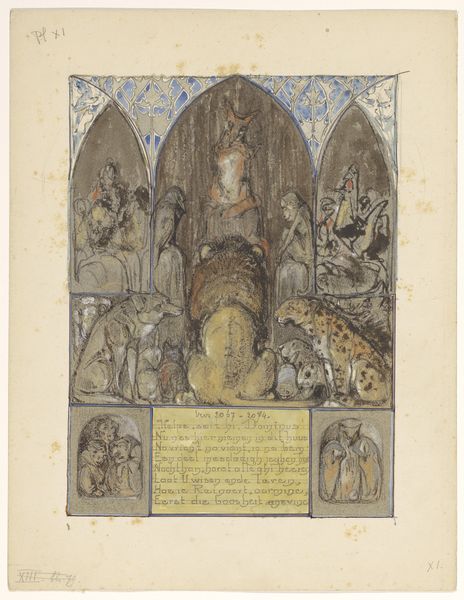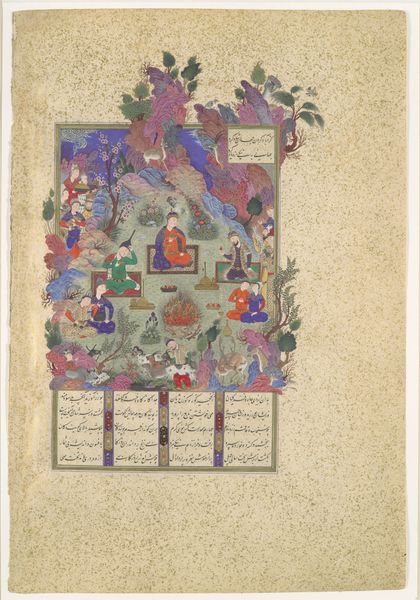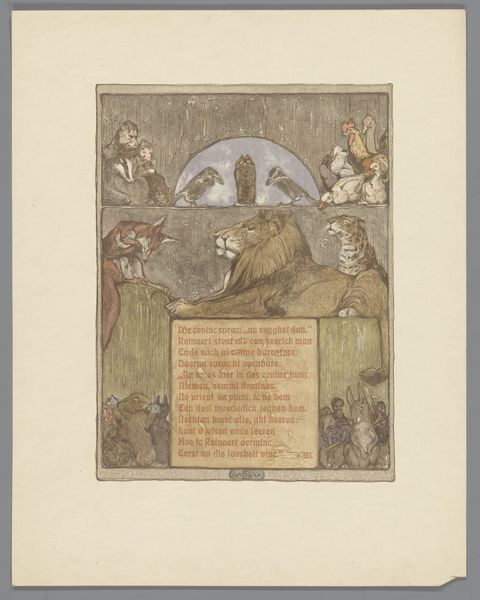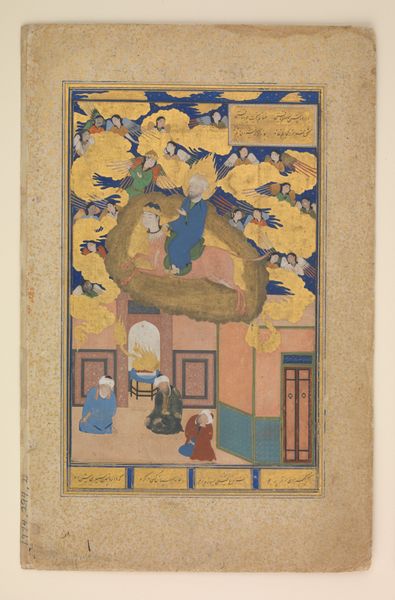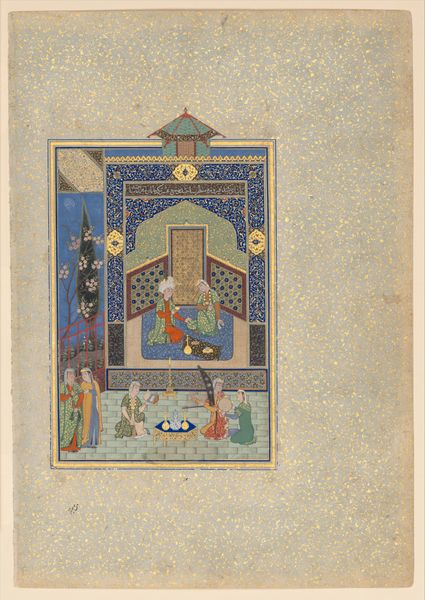
drawing, coloured-pencil, pencil
#
portrait
#
drawing
#
coloured-pencil
#
water colours
#
landscape
#
coloured pencil
#
folk-art
#
pencil
Dimensions: height 324 mm, width 249 mm
Copyright: Rijks Museum: Open Domain
Curator: Welcome. Today we're exploring "Koning Nobel schenkt Reinaert de vrijheid," or "King Nobel Grants Reynard Freedom," attributed to Bernard Willem Wierink. It’s a coloured-pencil drawing, dating sometime between 1866 and 1939. Editor: The muted palette immediately sets a somber tone, doesn't it? Despite the supposed "freedom," the piece feels heavily laden with... resignation, perhaps? The arrangement is very rigid, almost like a medieval tapestry design. Curator: Tapestries were undoubtedly on Wierink's mind, particularly those depicting moral tales or fables, which this evokes strongly. King Nobel, the lion, granting Reynard the Fox freedom… It plays into the very long tradition of animal allegories where their traits become culturally meaningful archetypes. Think about the wily fox and the noble lion and how we continue to use such associations. Editor: Indeed. I see a distinct contrast between the detailed rendering of the lion—Nobel, I presume—and the almost spectral quality of the other figures. The king seems almost solid compared to the more shadowy renderings around him. Notice the flatness overall: a deliberate effect I think. Curator: That difference might reflect Wierink's intention to portray the power dynamics. Nobel’s presence dominates, yet the scene feels fraught with unspoken tension and unease. The symbolic language—consider the possible implications of flowers depicted above. A potential for new life, perhaps ironically associated with a fox released back into the wild? Editor: It's a clever contrast; hopefulness overlaying the scene despite its subdued colors and rigid structure. Even the textural qualities of the pencil work are telling—hatching creating shadows hinting at moral ambiguities. Freedom with strings attached. Curator: Precisely. And given the history of Reynard tales—their subversive nature, the challenges they pose to authority—one might consider this drawing as less a celebration of freedom, more a commentary on the limits thereof, especially under a sovereign. Editor: Yes, now that you mention it, I’m struck by how modern that interpretation seems. Even in the constrained composition and reserved artistry, Wierink prompts considerations of social power dynamics and illusionary freedom that continue to resonate today. Curator: It speaks volumes for the enduring relevance of visual symbolism when rooted in a deeper historical and cultural understanding. Editor: An astute observation! Thanks to unpacking the construction and symbolism, I look at this art with completely renewed curiosity and wonder.
Comments
No comments
Be the first to comment and join the conversation on the ultimate creative platform.
